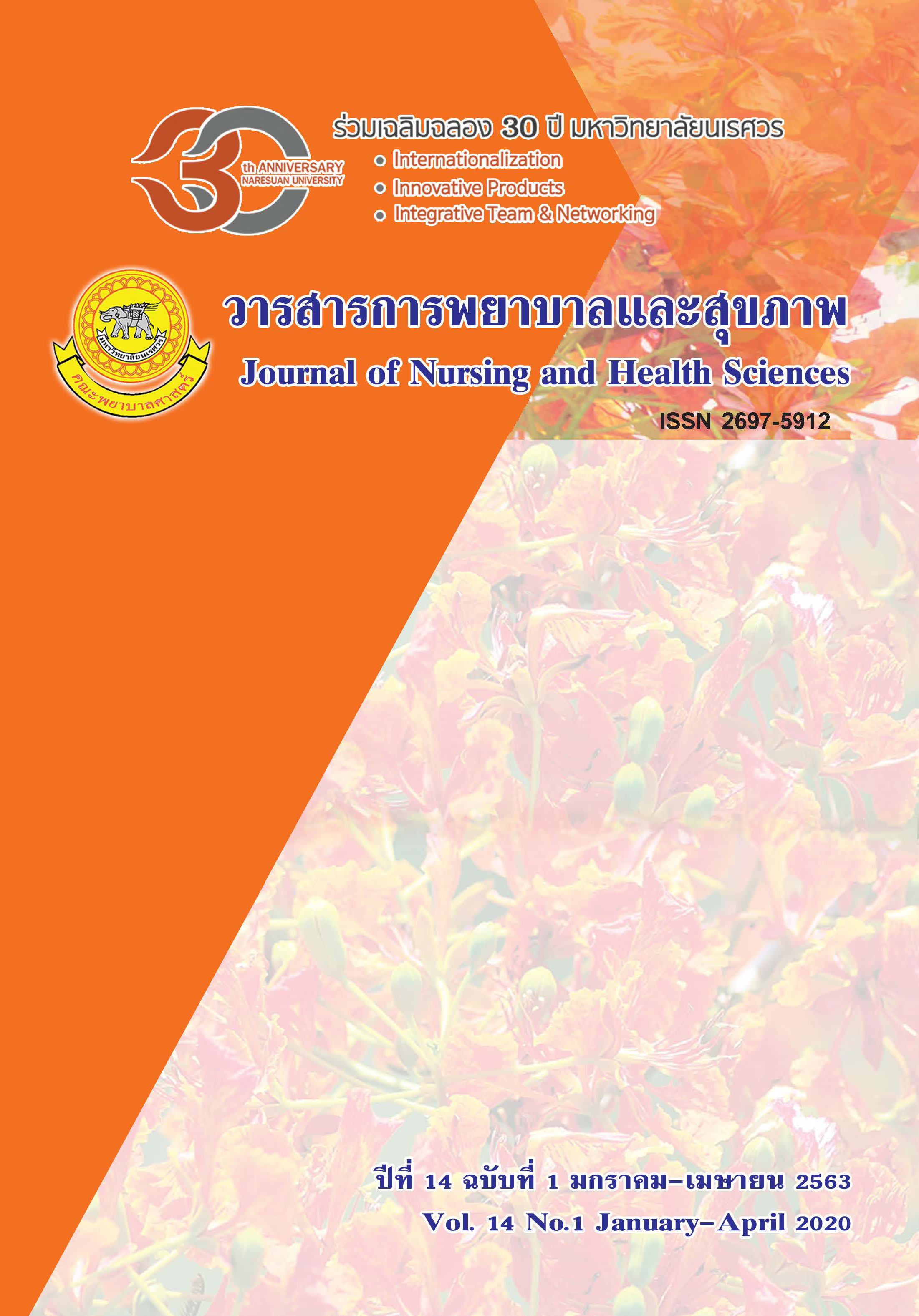Nurse's role for Nursing Care Regnant Women Regarding Hyperemesis Gravidarum
Main Article Content
Abstract
Hyperemesis gravidarum is a crucial issue in pregnant women. It impacts as nutrition problems during pregnancy, dehydration, and electrolyte imbalance. It also impacts on offspring outcomes as intrauterine growth retardation, premature contraction, and preterm birth including mental health problems: stress, anxiety, and fear. Lack of nutrition. The common etiology and risk factors are complications during pregnancy for example, molar pregnancy, twin pregnancy, and polyhydramnios including mental health problems: stress and anxiety. Nurse is a key significant person for assessment, tracking for etiology and risk factors and maternal and offspring consequences based on the nursing process: assessment for history, physical examination, abdominal palpation, laboratory test, and clinical diagnosis. Holistic nursing care should be planned that considers the physical, emotional, social, and spiritual needs based on the context and socioeconomic of pregnant women and their families.
Article Details
References
Bustos, M., Venkataramanan, R., & Caritis, S. (2017). Nausea and vomiting of pregnancy – What’s new? Autonomic Neuroscience: Basic and Clinical, 202, 62-72.
Castillo, M.J., & Phillippi, J.C. (2015). Hyperemesis gravidarum: A Holistic overview and approach to clinical assessment and management. Journal of Perinatal & Neonatal Nursing, 29(1), 12-22.
Koren, G., Boskovic, R., Hard, M., Maltepe, C., Navioz, Y., & Einarson, A. (2002). Motherisk-PUQE (pregnancy-unique quantification of emesis and nausea) scoring system for nausea and vomiting of pregnancy. American Journal of Obstetrics and Gynecology, 186(5), S228-231.
Koren, G., Piwko, C., Ahn, E., Boskovic, R., Maltepe, C., Einarson, A., Navioz, Y., & Ungar, W.J. (2005). Validation
studies of the pregnancy unique-quantification of emesis (PUQE) scores. Journal of Obstetrics and Gynaecology, 25(3), 241-244.
Lacasse, A., Rey, E., Ferreira, E., Morin, C., Bérard, A. (2008). Validity of a modified pregnancy-unique quantification of emesis and nausea (PUQE) scoring index to assess severity of nausea and vomiting of pregnancy. American Journal of Obstetrics and Gynecology, 198(1), 71.e1–71.e717.
Lowdermilk, D.L., Perry, S.E., Cashion, K., & Alden, K.R. (2016). Maternity & women’s health care. (11th ed.). U.S.A.: Elsevier.
Gayathri, K.B., & Bhargav, P.R.K. (2014). Hyperemesis gravidarum is a syndrome of metabolic and endocrine disturbances: A case description. Indian Journal of Clinical Biochemistry, 29(3), 390-392.
The Royal College of Obstetricians and Gynaecologists (RCOG). (2016). The management of nausea and vomiting of pregnancy and hyperemesis gravidarum. UK: RCOG.
Wegrzyniak, L.J., Repke, J.T., & Ural, S.H. (2012). Treatment of Hyperemesis Gravidarum. Reviews in Obstetrics and
Gynecology, 5(2), 78-84.


